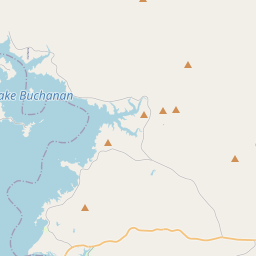The Galloway House
Historical marker location:






The original part of this house was built in 1856. The adobe and rock residence, owned by Maj. Hugh H. Calvert, also served as an inn. Local landowner Enoch Brooks bought the home in 1885 and made major additions to the structure. Significant changes were also made by W. C. Galloway (1856-1936), who became the owner in 1899. A prominent businessman and an organizer of the First State Bank of Burnet, he served as county tax collector and mayor of the city.
Recorded Texas Historic Landmark - 1981
As one of the most visible programs of the Texas Historical Commission (THC), historical markers commemorate diverse topics in Texas history, including: the history and architecture of houses, commercial and public buildings, religious congregations, and military sites; events that changed the course of local and state history; and individuals who have made lasting contributions to the state, community organizations, and businesses.
More history nearby
In the late 19th century, Texas became known for its cattle drives, in which cowboys would move herds of cattle from Texas to railheads in Kansas and other northern states. The cattle drives were dangerous and difficult work, but they played a key role in the development of the American cattle industry.
During the mid-1800s, the county played a significant role in the development of Texas. It served as a route for settlers heading west to other regions and became a popular stop for travelers. The town of Burnet, the county seat, grew steadily and became a center for trade and commerce.
In the late 19th century, Burnet County experienced a boom when the railroad reached the area in 1882. This new mode of transportation brought an influx of people and helped to stimulate economic growth. Agriculture, particularly the production of cotton, flourished during this time. The county also saw the establishment of various businesses, schools, and churches.
In the 20th century, Burnet County continued to evolve. It became known for its scenic beauty and recreational opportunities, attracting visitors from all over. The area also played a role in World War II, as Camp Bowie, a military training facility, was built in the county. Today, Burnet County remains a vibrant community with a mix of historical significance and natural beauty, offering residents and visitors a unique experience.
Burnet County Timeline
This timeline provides a condensed summary of the historical journey of Burnet County, Texas.
- 1848: Burnet County is established by the Texas legislature and named after David G. Burnet, the first president of the Republic of Texas.
- 1852: The first permanent settler, Reuben Hornsby, arrives in the area.
- 1854: The town of Burnet is designated as the county seat.
- 1861-1865: Burnet County residents serve in the Confederate Army during the American Civil War.
- 1870: The population of Burnet County reaches over 2,000.
- 1873: The Austin and Northwestern Railroad is completed, connecting Burnet County to other parts of Texas.
- 1882: The Texas Legislature establishes the first marble quarry in Marble Falls, bringing economic growth to the county.
- 1937: Lake Buchanan is completed, becoming the first of several reservoirs built in Burnet County to provide water and hydroelectric power.
- 1984: The Highland Lakes chain, a series of six reservoirs including Lake Buchanan, becomes a major tourist attraction in Burnet County.
- 2008: The historic Burnet County Courthouse, built in 1884, is restored and reopened to the public.